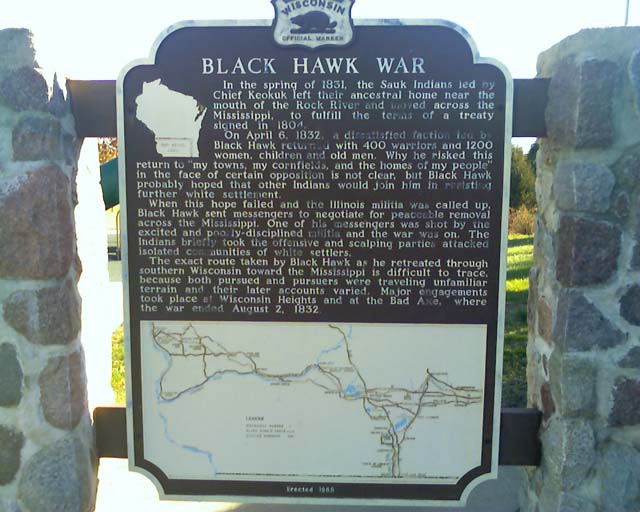OFFICIAL MARKER
BLACK HAWK WAR
In the spring of 1831, the Sauk Indians led by Chief Keokuk left their ancestral home near the mouth of the Rock River and moved across the Mississippi. to fulfill the terms of a treaty signed in 1804
On April 6, 1832, a dissatisfied faction
Black Hawk returned with 400 warriors and 1200
women. children and old men. Why he risked this return to "my towns, my cornfields, and the homes of my people" in the face of certain opposition is not clear, but Black Hawk probably hoped that other Indians would join him in resisting further white settlement.
When this hope failed and the Illinois militia was called up, Black Hawk sent messengers to negotiate for peaceable removal across the Mississippi. One of his messengers was shot by the excited and poorly-disciplined militia and the war was on. The Indians briefly took the offensive and scalping parties attacked isolated communities of white settlers.
The exact route taken by Black Hawk as he retreated through southern Wisconsin toward the Mississippi is difficult to trace, because both pursued and pursuers were traveling unfamiliar terrain and their later accounts varied. Major engagements took place at Wisconsin Heights and at the Bad Axe, where the war ended August 2, 1832.
Erected 1968
|

|
|


